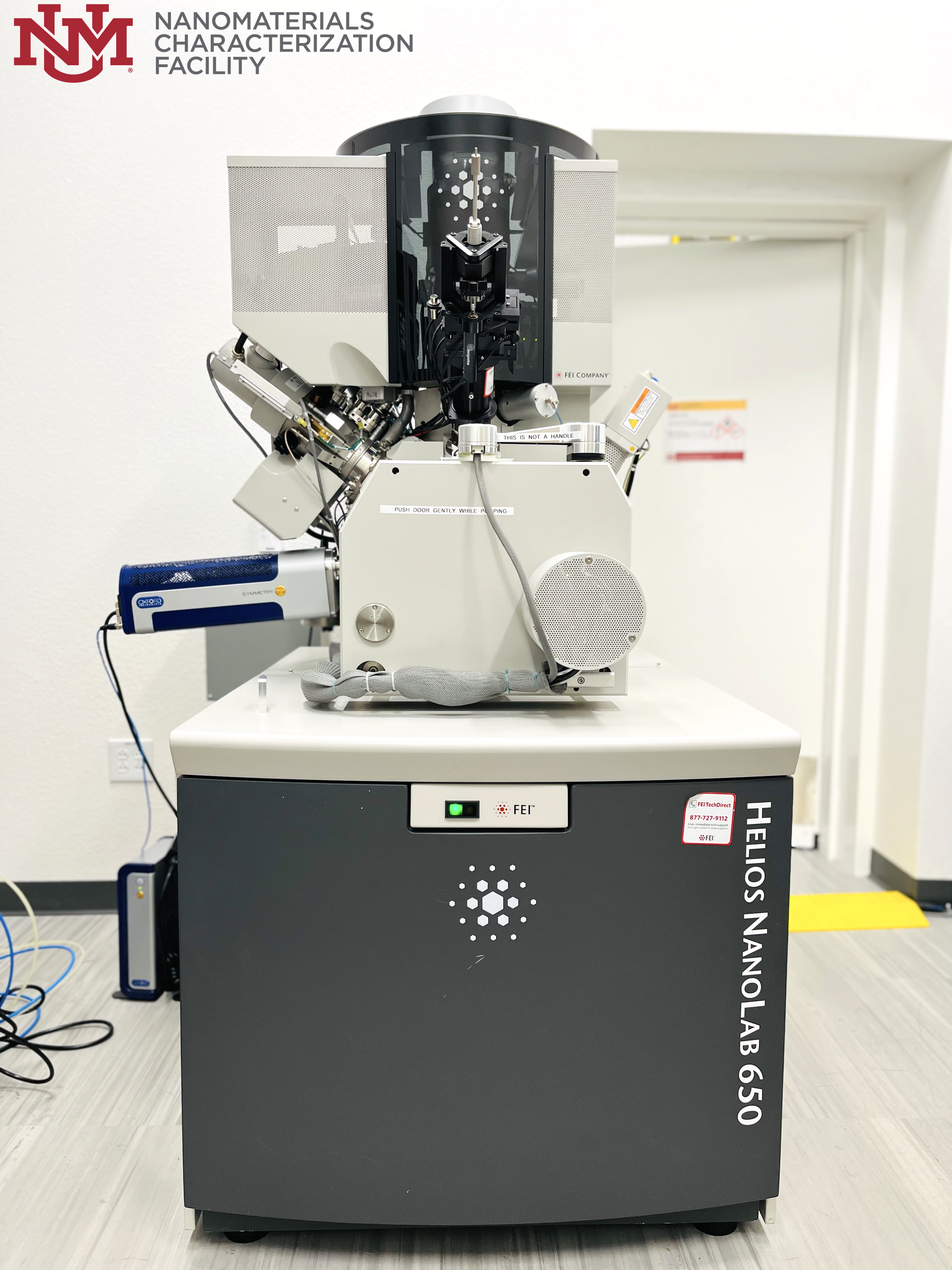SEM/FIB Analysis
FEI HELIOS NanoLab 650 SEM/FIB

The FEI Helios NanoLab 650 Dual Beam microscope combines a monochromated field emission scanning electron microscope (FE-SEM) with an advanced focused ion beam (FIB) column for fast, precise nanomachining and nanoscale structural characterization. The microscope is equipped with an Oxford EDXS system and an Oxford EBSD system for chemical and microstructural analyses, a Pt deposition source, and triple in-lens electron detectors with through Lens (TLD, Secondary, and Backscatter mode).
Specifications and Electron Optics
- XHR electron optics (Dual-mode magnetic immersion/field free lens with ultra-high brightness Elstar emitter) with electrostatic scanning, and advanced SE and BSE in-lens detection.
- Source: Schottky field emitter
- Beam current: 0.8 pA - 26 nA
- Landing energies are adjustable to up to 30 kV
- Electron column equipped with UC technology to reduce the beam energy spread below 0.2 eV, which enables sub-nanometer resolution
- High sensitivity and retractable solid-state backscattered detector (CBS)
- High-resolution patterning engine capable of Simultaneous Patterning and Imaging (SPI)
- Gas chemistry for Pt deposition
- Integrated real-time monitor
- Optical Navigation Camera (out of service)
- IR-CCD camera for in-chamber viewing
The instrument is also equipped with a 5-axes motorized x-y-z-rotate-tilt stage. Motion in x and y axes is limited to 150 mm; tilt range -5 to 60 degrees; electronic scan rotation up to 360 degrees and motorized z motion is limited to 10 mm.
Ion Optics
- Voltage: 0.5 kV to 30 kV
- Beam Current: 1.1 pA - 65 nA
- ICE Detector (direct ion detector)
Microanalysis
- For EDS, the instrument uses an Oxford Instrument Ultim Max SDD detector (170 mm2).
- For EBSD*, the instrument uses an Oxford Instrument Symmetry S3 detector
